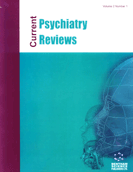Abstract
Bipolar disorder remains a serious public health problem with a significant personal and economic burden. In line with the widespread recognition of the value of active patient involvement in their care, daily mood charting may increase the patients understanding of their condition and improve adherence with complex medication regimes. Knowledge about the course and pattern of an individuals disorder may also allow earlier recognition of new episodes and help determine the optimal treatment strategy. Mood charting is also an essential tool for longitudinal studies of patient outcomes. Traditionally, patients have used paper-based tools for this daily self-assessment, but these forms are associated with problems of data quality, poor compliance, high costs for data entry, and only provide limited feedback for the patient and physician. As computer technology has gained acceptance by the public worldwide, new options are available to automate monitoring of patients with mood disorders. This article will review mood charting and describe our experience with the development, validation and use of ChronoRecord, an automated instrument for mood charting.
Keywords: Bipolar disorder, mood disorders, longitudinal studies, methodology, self-reporting, mood charting
 3
3

